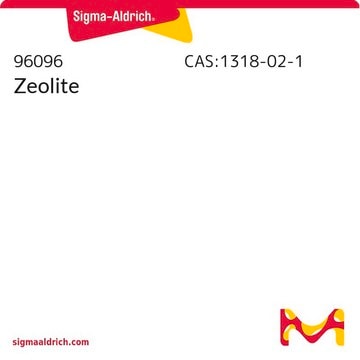348848
Titanium
foil, thickness 0.025 mm, 99.98% trace metals basis
Sign Into View Organizational & Contract Pricing
All Photos(1)
About This Item
Empirical Formula (Hill Notation):
Ti
CAS Number:
Molecular Weight:
47.87
EC Number:
MDL number:
UNSPSC Code:
12141746
PubChem Substance ID:
NACRES:
NA.23
Recommended Products
Assay
99.98% trace metals basis
form
foil
autoignition temp.
860 °F
resistivity
42.0 μΩ-cm, 20°C
thickness
0.025 mm
bp
3287 °C (lit.)
mp
1660 °C (lit.)
density
4.5 g/mL at 25 °C (lit.)
application(s)
battery manufacturing
SMILES string
[Ti]
InChI
1S/Ti
InChI key
RTAQQCXQSZGOHL-UHFFFAOYSA-N
Related Categories
General description
Ti has low thermal and electrical conductivity. It is highly corrosion-resistant and has a high strength to weight ratio. A few angstroms thick layer of titania on the surface of Ti products makes its corrosion resistant.5 Ti foils could be employed as a substrate to grow arrays of hematite nanorods by hydrothermal method. A study reports pressure less sintering of SiC pieces and single crystals to Ti foils at 1500oC. Ti foil may be applied as an interlayer, diffusion bonded during the self joining of Si3N4. Si3N4/Ti-foil/Si3N4.
Application
- Medical Devices: Due to its biocompatibility, it is widely used in medical applications, such as in joint replacement implants, dental implants, and surgical instruments (Britannica).
- Corrosion Resistance: Its resistance to corrosion by both water and chemical media leads to its use in chemical processing industries for equipment like heat exchangers and reactors (Royal Society of Chemistry).
Quantity
280 mg = 50 × 50 mm; 1.1 g = 100 × 100 mm
Storage Class Code
11 - Combustible Solids
WGK
nwg
Flash Point(F)
Not applicable
Flash Point(C)
Not applicable
Personal Protective Equipment
dust mask type N95 (US), Eyeshields, Gloves
Certificates of Analysis (COA)
Search for Certificates of Analysis (COA) by entering the products Lot/Batch Number. Lot and Batch Numbers can be found on a product’s label following the words ‘Lot’ or ‘Batch’.
Already Own This Product?
Find documentation for the products that you have recently purchased in the Document Library.
Customers Also Viewed
Joining of silicon nitride with a titanium foil interlayer
Lemus J and Drew RAL
Materials Science & Engineering. A, Structural Materials : Properties, Microstructure and Processing, 352, 169-178 (2003)
Bonding mechanism between silicon carbide and thin foils of reactive metals
Morozumi S, et al.
J. Mater. Sci., 20(11), 3976-3982 (1985)
Large-Scale Porous Hematite Nanorod Arrays: Direct Growth on Titanium Foil and Reversible Lithium Storage.
Song Y et al.
The Journal of Physical Chemistry C, 114(49), 21158-21164 (2010)
Jinho Shin et al.
Journal of nanoscience and nanotechnology, 13(8), 5807-5810 (2013-07-26)
In this study, hydroxyapatite (HA) was coated on anodized titanium (Ti) surfaces through radio frequency magnetron sputtering in order to improve biological response of the titanium surface. All the samples were blasted with resorbable blasting media (RBM). RBM-blasted Ti surface
R Khataee et al.
Journal of nanoscience and nanotechnology, 13(7), 5109-5114 (2013-08-02)
In the present study, self-cleaning and mechanical properties of white Portland cement by addition of commercial available TiO2 nanoparticles with the average particle size of 80 nm were investigated. X-ray diffraction (XRD), transmission electron microscopy (TEM) and BET were used
Our team of scientists has experience in all areas of research including Life Science, Material Science, Chemical Synthesis, Chromatography, Analytical and many others.
Contact Technical Service


